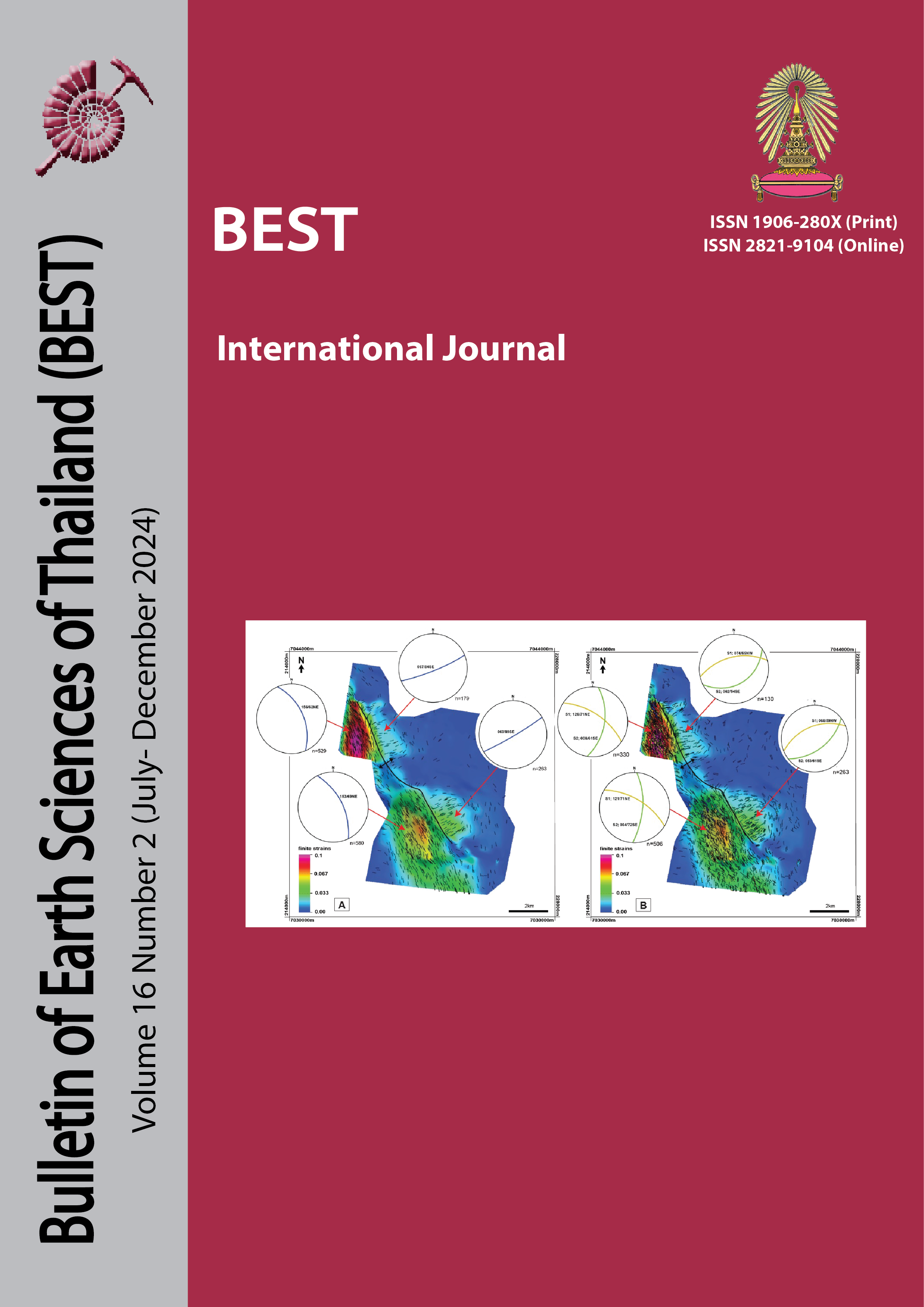Optimizing CO2 Truck Transport Routes from Sources to Storage in Northeastern Thailand
Main Article Content
Abstract
The rise in CO2 emissions has paralleled the country's economic growth, with the energy sector being the primary source. In northeastern Thailand, power generation, particularly from biogas-based plants, contributes significantly to these emissions. To effectively mitigate CO2 emissions by capturing and transporting CO2 from emission sources to the storage site of the Nam Phong power plant for the implementation of carbon capture and storage (CCS) technologies in a depleted gas field, the assessment of logistics is required. This study determines optimal truck transportation routes for 23 CO2 emission point sources in northeastern Thailand, providing comprehensive details such as starting and ending points, working hours, pickup quantities, total distance traveled, and cost per trip. The analysis identifies an optimal solution utilizing seven vehicles to efficiently collect CO2 emissions from all designated locations, with daily CO2 emissions at approximately 20 tonnes and annual emissions at around 5,565 tonnes. Key challenges in CO2 transportation include natural hazards like flooding, geological obstacles, technical issues related to maintaining cold temperatures and safety protocols, and regulatory hurdles such as obtaining permits and ensuring compliance with environmental regulations.
Article Details

This work is licensed under a Creative Commons Attribution-NonCommercial-NoDerivatives 4.0 International License.
Copyright © 2008 Department of Geology, Faculty of Science, Chulalongkorn University. Parts of an article can be photocopied or reproduced without prior written permission from the author(s), but due acknowledgments should be stated or cited accordingly.


